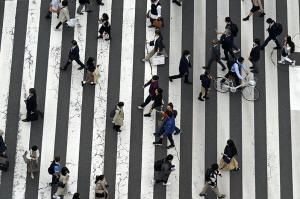|
The
broad plan passed by the Cabinet is the centerpiece of Prime
Minister Shigeru Ishiba’s recently installed administration. It
provides support for digital innovation in the world’s fourth
largest economy, subsidies to defray for rising energy costs and
help for low-income households.
The plan is designed to instill a sense of “well being” in the
Japanese people, the government said, using the English phrase.
Although Japan has managed weak growth in recent quarters, the
long-term outlook for the economy and for the country's standing
in the world is uncertain. The plan includes measures to address
the country's falling birthrate, which is one of the lowest
among developed nations, help for working women and for the
elderly.
The plan also calls for raising the annual tax-free salary
threshold from the current 1.03 million yen ($6,640). The new
ceiling is not yet decided. But a level of 1.78 million yen
($11,500) has been proposed.
“During the past 30 years, our nation has overcome various
challenges, including deflation and confusion that followed the
burst of the ‘bubble economy,’ the global financial crisis,
various natural disasters and the difficulties stemming from the
coronavirus pandemic,” documents provided by the Ministry of
Economy, Trade and Industry said.
The government says signs of growth are evident, but Japan must
avoid a negative spiraling of lower prices similar to an earlier
protracted bout of deflation and attain sustainable wage
increases to support growth.
The package promised help for small and medium-size businesses,
for regional economies, farms and creative content like
animation.
The ruling Liberal Democratic Party and its coalition partner
lost their majority in the lower house of Parliament last month
in an election.
They face the challenge of maneuvering for support among various
opposition parties. Some analysts already are projecting that
Ishiba’s premiership will be relatively short-lived.
All contents © copyright 2024 Associated Press. All rights reserved

|
|




